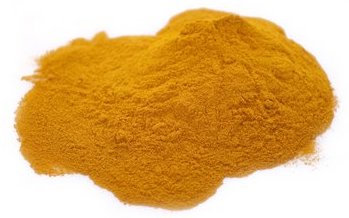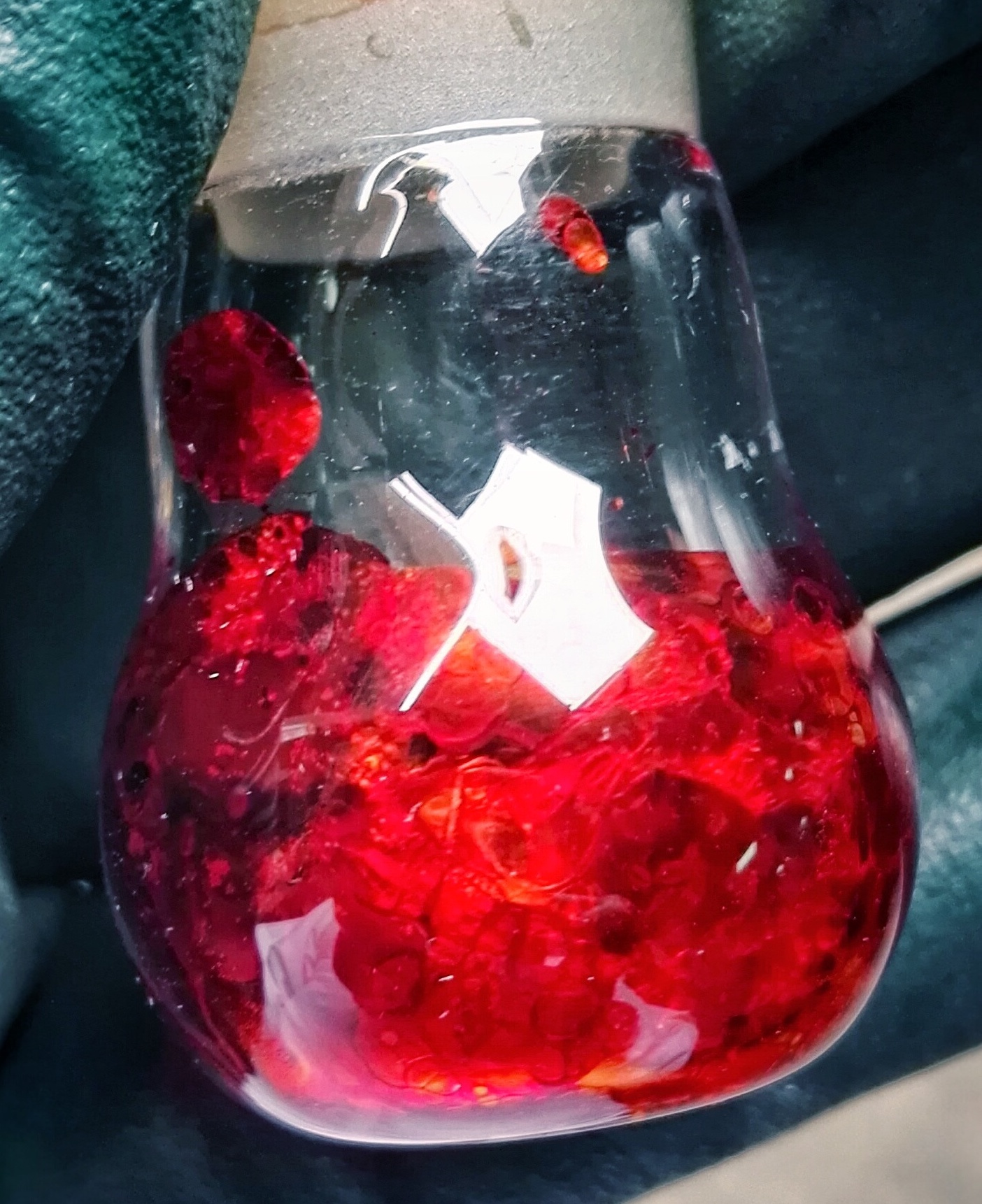|
Diarylheptanoid
The diarylheptanoids (also known as diphenylheptanoids) are a relatively small class of plant secondary metabolites. Diarylheptanoids consist of two aromatic rings (aryl groups) joined by a seven carbons chain (heptane) and having various substituents. They can be classified into linear (curcuminoids) and cyclic diarylheptanoids. The best known member is curcumin, which is isolated from turmeric (''Curcuma longa'') and is known as food coloring E100. Some other ''Curcuma'' species, such as ''Curcuma comosa'' also produce diarylheptanoids. They have been reported from plants in 10 different families, e.g. ''Betulaceae'' and ''Zingiberaceae''. A diarylheptanoid is an intermediate in the biosynthesis of phenylphenalenones in '' Anigozanthos preissii'' or '' Wachendorfia thyrsiflora'' (Haemodoraceae). Cyclic diarylheptanoids Cyclic diarylheptanoids formed from myricanone can be isolated from the bark of ''Myrica rubra'' (Myricaceae). Two cyclic diarylheptanoids, named ostryopsitr ... [...More Info...] [...Related Items...] OR: [Wikipedia] [Google] [Baidu] |
Myricanone
Myricanone is a cyclic diarylheptanoid isolated from the bark of ''Myrica rubra ''Myrica rubra'', also called yangmei (; Cantonese: yeung4 mui4; Shanghainese: ), , Chinese bayberry, red bayberry, yumberry, waxberry, or Chinese strawberry (and often mistranslated from Chinese as arbutus) is a subtropical tree grown for its f ...'' (Myricaceae). References Diarylheptanoids Macrocycles O-methylated natural phenols Cyclophanes Ketones Biphenyls {{aromatic-stub ... [...More Info...] [...Related Items...] OR: [Wikipedia] [Google] [Baidu] |
Curcuma Comosa
''Curcuma comosa'' is a species of flowering plant in the ginger family. It is native to much of Asia, including Thailand, Indonesia, and Malaysia.Qu, Y., et al. (2009)Sesquiterpenes from ''Curcuma comosa''.''Journal of Natural Medicines'' 63 102. The herb is cultivated in Thailand, especially in the Northern Province, including Petchaboon, and the Northeastern Province, including Loei. ''Curcuma comosa'' is widely used as a traditional herbal remedy. Uses This medicinal plant is used for its anti-inflammatory properties in the treatment of postpartum uterine bleeding and uterine inflammation. Research suggests that ''Curcuma comosa'' extract possesses a strong anti-inflammatory activity and has a potential to be developed as a therapeutic compound for diverse neurological disorders associated with inflammation. Thai traditional practitioners use the rhizome of ''C. comosa'' in the treatment of women for the alleviation of postpartum uterine pain, the enhancement of uteri ... [...More Info...] [...Related Items...] OR: [Wikipedia] [Google] [Baidu] |
Acer Nikoense
''Acer maximowiczianum'' (Nikko maple; syn. ''A. nikoense'' Maxim.), is a species of maple widely distributed in China (Anhui, Hubei, Hunan, Jiangxi, Sichuan, Zhejiang) and Japan ( Honshū, Kyūshū, Shikoku).Xu, T.-z., Chen, Y., de Jong, P. C., & Oterdoom, H. J''Flora of China'': Aceraceae (draft) Description It is a slender deciduous tree that reaches a height of but is usually smaller.van Gelderen, C.J. & van Gelderen, D.M. (1999). ''Maples for Gardens: A Color Encyclopedia''. It is a trifoliate maple, related to such other species as threeflower maple (''Acer triflorum'') and paperbark maple (''Acer griseum'') but has dark gray to blackish bark dissimilar to the exfoliating bark of either. The leaves have a petiole and three leaflets; the leaflets are oblong, long and broad, with dense, soft pubescence and smooth margins. The hard, horizontally spreading samaras are long and broad, and have the same parthenocarpic tendencies as those of ''A. griseum''. Taxonom ... [...More Info...] [...Related Items...] OR: [Wikipedia] [Google] [Baidu] |
Ostryopsis Nobilis
''Ostryopsis nobilis'' () is a shrub species in the genus ''Ostryopsis'' found in China. It is an endemic Chinese medicinal plant. It forms thickets on sunny mountain slopes between 1500 and 3000 m. It is found in South West Sichuan and North West Yunnan. Two cyclic diarylheptanoid The diarylheptanoids (also known as diphenylheptanoids) are a relatively small class of plant secondary metabolites. Diarylheptanoids consist of two aromatic rings (aryl groups) joined by a seven carbons chain (heptane) and having various substitue ...s, named ostryopsitrienol and ostryopsitriol, can be isolated from the stems of ''O. nobilis''.Two new cyclic diarylheptanoids from the stems of Ostryopsis nobilis. Yan-Xia Zhang, Bing Xia, Yan Zhou, Li-Sheng Ding and Shu-Lin Peng, Chinese Chemical Letters, Volume 24, Issue 6, June 2013, Pages 512–514, References External links Flora of China - ''Ostryopsis nobilis'' Betulaceae Flora of Sichuan Flora of Yunnan Plants described in 1914 ... [...More Info...] [...Related Items...] OR: [Wikipedia] [Google] [Baidu] |
Myricanone
Myricanone is a cyclic diarylheptanoid isolated from the bark of ''Myrica rubra ''Myrica rubra'', also called yangmei (; Cantonese: yeung4 mui4; Shanghainese: ), , Chinese bayberry, red bayberry, yumberry, waxberry, or Chinese strawberry (and often mistranslated from Chinese as arbutus) is a subtropical tree grown for its f ...'' (Myricaceae). References Diarylheptanoids Macrocycles O-methylated natural phenols Cyclophanes Ketones Biphenyls {{aromatic-stub ... [...More Info...] [...Related Items...] OR: [Wikipedia] [Google] [Baidu] |
Curcumin Structure (keto)
Curcumin is a bright yellow chemical produced by plants of the ''Curcuma longa'' species. It is the principal curcuminoid of turmeric (''Curcuma longa''), a member of the ginger family, Zingiberaceae. It is sold as a herbal supplement, cosmetics ingredient, food flavoring, and food coloring. Chemically, curcumin is a diarylheptanoid, belonging to the group of curcuminoids, which are phenolic pigments responsible for the yellow color of turmeric. Laboratory and clinical research have not confirmed any medical use for curcumin. It is difficult to study because it is both unstable and poorly bioavailable. It is unlikely to produce useful leads for drug development. History Curcumin was named in 1815 when Henri Auguste Vogel and Pierre Joseph Pelletier reported the first isolation of a "yellow coloring-matter" from the rhizomes of turmeric. Later, it was found to be a mixture of resin and turmeric oil. In 1910, Milobedzka and Lampe reported the chemical structure of curcumin to b ... [...More Info...] [...Related Items...] OR: [Wikipedia] [Google] [Baidu] |
Turmeric
Turmeric () is a flowering plant, ''Curcuma longa'' (), of the ginger family, Zingiberaceae, the rhizomes of which are used in cooking. The plant is a perennial, rhizomatous, herbaceous plant native to the Indian subcontinent and Southeast Asia that requires temperatures between and a considerable amount of Annual rainfall in india, annual rainfall to thrive. Plants are gathered each year for their rhizomes, some for propagation in the following season and some for consumption. The rhizomes are used fresh or boiled in water and dried, after which they are ground into a deep orange-yellow powder commonly used as a food coloring#Natural food dyes, coloring and flavoring agent in many Asian cuisines, especially for Curry, curries, as well as for dyeing, characteristics imparted by the principal turmeric constituent, curcumin. Turmeric powder has a warm, bitter, black pepper-like flavor and earthy, mustard plant, mustard-like aroma. Curcumin, a bright yellow chemical produced by ... [...More Info...] [...Related Items...] OR: [Wikipedia] [Google] [Baidu] |
Curcumin
Curcumin is a bright yellow chemical produced by plants of the ''Curcuma longa'' species. It is the principal curcuminoid of turmeric (''Curcuma longa''), a member of the ginger family, Zingiberaceae. It is sold as a herbal supplement, cosmetics ingredient, food flavoring, and food coloring. Chemically, curcumin is a diarylheptanoid, belonging to the group of curcuminoids, which are natural phenol, phenolic pigments responsible for the yellow color of turmeric. Laboratory and clinical research have not confirmed any medical use for curcumin. It is difficult to study because it is both unstable and poorly bioavailable. It is unlikely to produce useful leads for drug development. History Curcumin was named in 1815 when Henri Auguste Vogel and Pierre Joseph Pelletier reported the first isolation of a "yellow coloring-matter" from the rhizomes of turmeric. Later, it was found to be a mixture of resin and turmeric oil. In 1910, Milobedzka and Lampe reported the chemical structure ... [...More Info...] [...Related Items...] OR: [Wikipedia] [Google] [Baidu] |
Curcuminoid
A curcuminoid is a linear diarylheptanoid, a relatively small class of plant secondary metabolites that includes curcumin, demethoxycurcumin, and bisdemethoxycurcumin, all isolated from turmeric (Turmeric, curcuma longa). These Chemical compound, compounds are natural phenols and produce a pronounced yellow color that is often used to color foods and medicines. Curcumin is obtained from the Rhizome, root of turmeric. Curcuminoids are solubility, soluble in dimethyl sulfoxide (DMSO), acetone and ethanol, but are poorly soluble in lipids. It is possible to increase curcuminoid solubility in water, aqueous phase (matter), phase with surfactants or surfactant, co-surfactants. Most common derivatives have different substituents on the phenyl groups. There is an increasing demand for demethoxycurcumin, bisdemethoxycurcumin, and other curcuminoids because of their biological activity. Cyclodextrins Curcuminoids form a more stable Coordination complex, complex with solutions which c ... [...More Info...] [...Related Items...] OR: [Wikipedia] [Google] [Baidu] |
Etlingera Elatior
''Etlingera elatior'' (also known as torch ginger, ginger flower, red ginger lily, torch lily, wild ginger, ''combrang, bunga kantan'', Philippine wax flower, ගොඩ ඕලු (goda olu), ගොඩ නෙලුම් (goda nelum), සිද්ධාර්ථ (siddartha), 火炬姜 (), Indonesian tall ginger, ''boca de dragón, rose de porcelaine'', and porcelain rose) is a species of herbaceous perennial plant. Botanical synonyms include ''Nicolaia elatior'',Riffle, Robert Lee (1998). ''The tropical look: an encyclopedia of dramatic landscape plants'', Timber Press, , p. 167 ''Phaeomeria magnifica'', ''Nicolaia speciosa'', ''Phaeomeria speciosa'', ''Alpinia elatior'', and ''Alpinia magnifica.'' The showy pink flowers are used in decorative arrangements, ''bunga kecombrang'', and are an important ingredient across Southeast Asia. In North Sumatra (especially among the Karo people), the flower buds are used for a stewed fish dish called ''Arsik ikan mas'' (Andaliman/Szechuan ... [...More Info...] [...Related Items...] OR: [Wikipedia] [Google] [Baidu] |
Juglans Cathayensis
''Juglans mandshurica'' (), also known as Manchurian walnut, or Tigernut, is a deciduous tree of the genus ''Juglans'' (section ''Cardiocaryon''), native to the Eastern Asiatic Region ( China, Russian Far East, North Korea and South Korea). It grows to about 25 m. This species was first described by the Russian botanist Carl Johann Maximowicz, in ''Bulletin de la Classe Physico-Mathématique de l'Académie Impériale des Sciences de Saint-Pétersbourg'', which was published in 1856. The leaves are alternate, 40–90 cm long, odd-pinnate, with 7–19 leaflets, 6–17 cm long and 2–7.5 cm broad (margin serrate or serrulate, apex acuminate). The male flowers are in drooping catkins 9–40 cm long, the wind-pollinated female flowers (April–May) are terminal, in spikes of 4 to 10, ripening in August–October into nuts, 3-7.5 × 3–5 cm, with densely glandular pubescent green husk and very thick shell. The tree is exceptionally hardy (down to at lea ... [...More Info...] [...Related Items...] OR: [Wikipedia] [Google] [Baidu] |
Galeon (molecule)
Galeon is a discontinued Gecko-based web browser that was created by Marco Pesenti Gritti with the goal of delivering a consistent browsing experience to GNOME desktop environment. It gained some popularity in the early 2000s due to its speed, flexibility in configuration and features. The disagreement over the future of Galeon split the development team in 2002, which resulted in the departure of the browser's initial author and several other developers. This event marked the beginning of the browser's popularity decline, which led to its discontinuation in September 2008. Some of Galeon's features were subsequently ported to Epiphany (now called Web) – the descendant of Galeon. Features Galeon made use of Gecko's features including configuration options and standards support. Apart from that, Galeon had several features that were uncommon in browsers at that time: *mouse gestures *configurable user agent string *configurable display of favicons *customizable toolbars ... [...More Info...] [...Related Items...] OR: [Wikipedia] [Google] [Baidu] |


